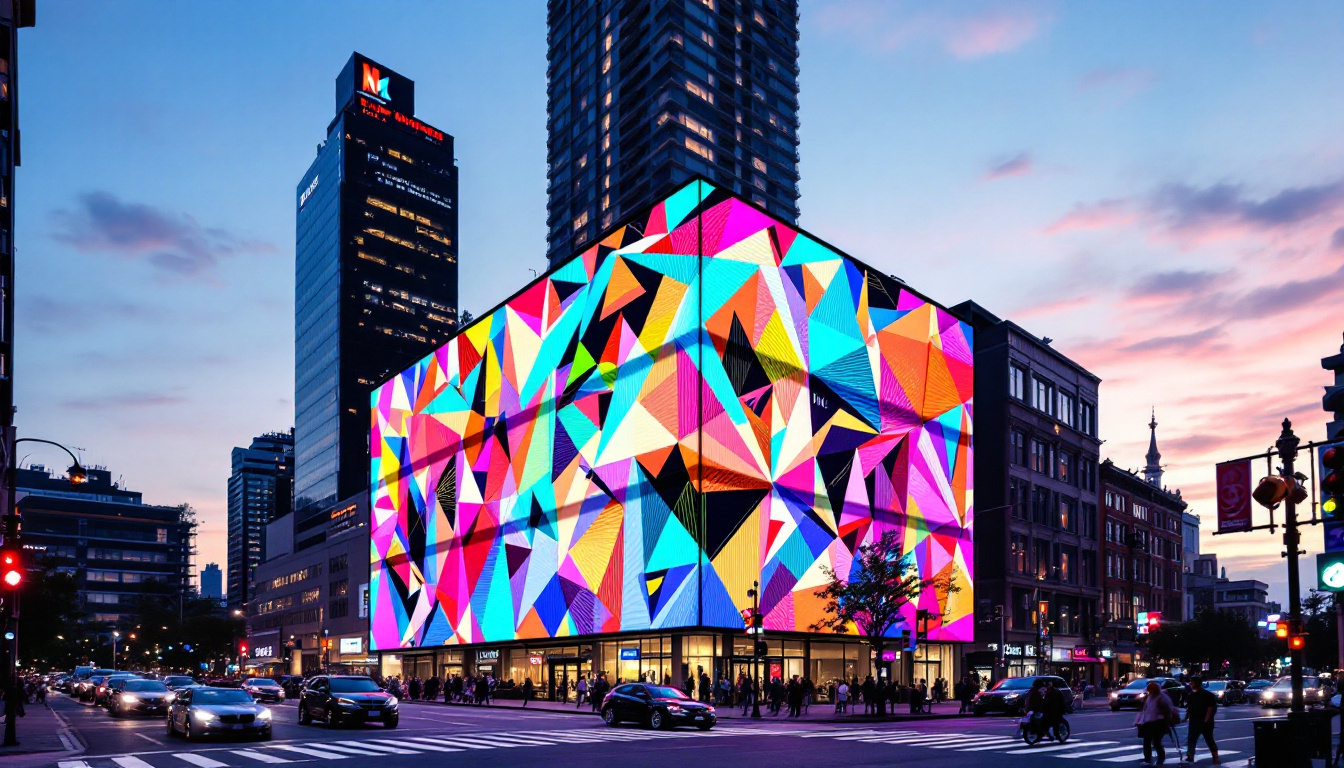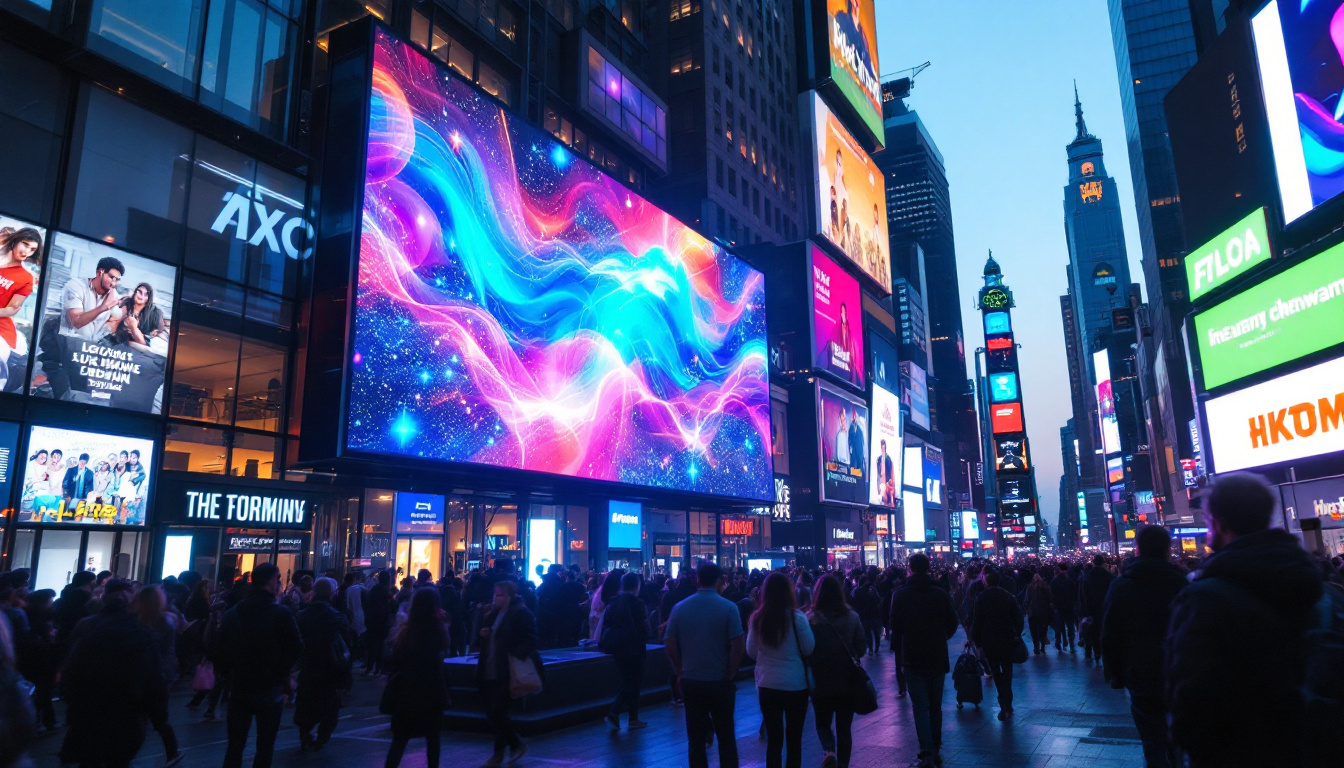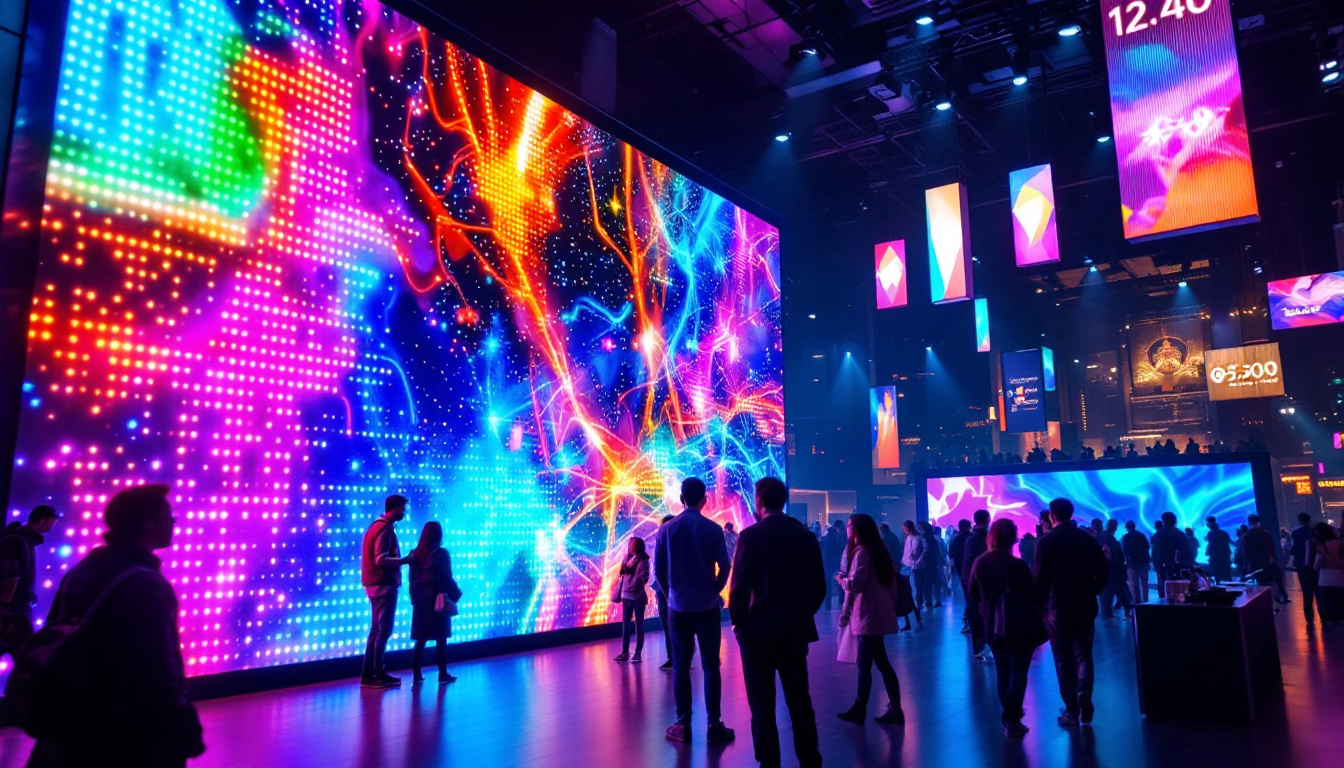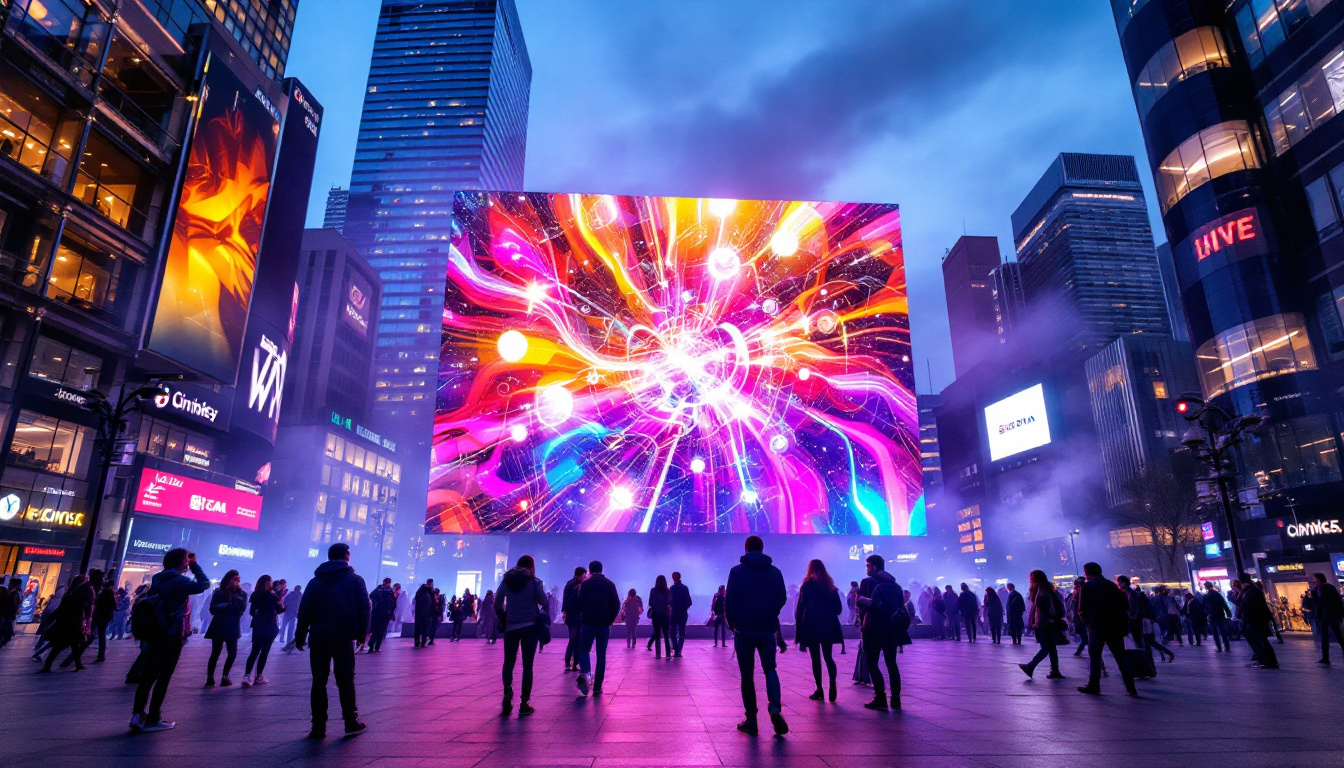In the fast-paced environment of modern airports, effective communication is crucial. One of the most significant advancements in this area is the use of LED displays. These displays have transformed how information is conveyed to passengers, enhancing their travel experience. This article delves into the various aspects of LED displays in airports, focusing on their functionality, benefits, and future prospects.
Understanding LED Displays
LED (Light Emitting Diode) displays are electronic screens that use LEDs to produce images and text. They are known for their brightness, energy efficiency, and ability to display vibrant colors. In airports, these displays serve multiple purposes, from flight information to advertisements, ensuring that passengers receive timely updates. The integration of LED technology has revolutionized the way information is presented in public spaces, making it more engaging and accessible. With the growing reliance on digital communication, airports are increasingly adopting these displays to enhance the overall travel experience.
How LED Displays Work
LED displays consist of numerous tiny diodes that emit light when an electric current passes through them. By combining red, green, and blue LEDs, these displays can produce a wide spectrum of colors. The arrangement of these diodes determines the resolution and clarity of the images displayed. Airports often utilize large LED screens that can be viewed from a distance, ensuring that information is easily accessible to travelers. Additionally, the technology behind LED displays allows for quick refresh rates, which is crucial for showing dynamic content such as flight updates and emergency announcements. This capability ensures that passengers are not only informed but also engaged with visually appealing content during their time in the airport.
Types of LED Displays Used in Airports
Airports employ a variety of LED display types to cater to different needs. The most common types include:
- Digital Flight Information Displays (DFIDs): These screens provide real-time updates on flight statuses, including arrivals, departures, and gate changes.
- Wayfinding Displays: Located throughout the airport, these displays help passengers navigate the terminal, showing directions to gates, lounges, and amenities.
- Advertising Displays: Airports often feature LED screens for advertising, allowing brands to reach a captive audience while generating revenue for the airport.
Beyond these common types, some airports are also experimenting with interactive LED displays that allow passengers to engage directly with the content. These displays can provide personalized information, such as boarding passes or travel tips, based on user input. Moreover, some airports have begun to implement LED wall installations that create immersive experiences, showcasing local culture or art, thus enhancing the ambiance of the terminal. The versatility of LED technology not only improves functionality but also adds an aesthetic element to the airport environment, making travel more enjoyable for passengers.
The Benefits of LED Displays in Airports
LED displays offer numerous advantages that make them an ideal choice for airport environments. Their benefits extend beyond mere aesthetics, playing a vital role in enhancing operational efficiency and passenger satisfaction.
Enhanced Visibility and Clarity
One of the primary advantages of LED displays is their superior visibility. Even in brightly lit environments, such as airport terminals, LED screens maintain high brightness levels, ensuring that information is clear and easy to read. This is particularly important for passengers who may be in a hurry or dealing with stress related to travel. Furthermore, the high contrast ratios of LED displays contribute to better legibility from various distances and angles, which is essential in busy airport settings where travelers may be moving quickly or viewing screens from afar.
Energy Efficiency
LED technology is known for its energy efficiency compared to traditional display technologies. Airports, which operate 24/7, benefit significantly from the reduced energy consumption of LED displays. This not only lowers operational costs but also aligns with sustainability initiatives aimed at reducing the carbon footprint of airport operations. Additionally, the longevity of LED displays means that they require less frequent replacements, further minimizing waste and contributing to a more environmentally friendly approach to airport management.
Real-Time Updates
In an industry where information changes rapidly, the ability to provide real-time updates is crucial. LED displays can be easily integrated with flight information systems, allowing for immediate updates on flight statuses, delays, and gate changes. This capability enhances the overall passenger experience by keeping travelers informed and reducing confusion. Moreover, the dynamic nature of LED displays allows airports to showcase additional information, such as weather updates, security alerts, and promotional content for airport services, creating a more engaging environment for passengers as they await their flights.
Versatility in Content Delivery
Another significant benefit of LED displays is their versatility in content delivery. Airports can utilize these screens for a wide range of purposes, from displaying flight information to showcasing advertisements and public service announcements. This flexibility allows airports to tailor their messaging to different audiences, whether it be travelers, airport staff, or visitors. For example, during peak travel seasons, airports can highlight special offers from shops and restaurants, encouraging passengers to explore their surroundings while waiting for their flights. Additionally, the ability to easily update content means that airports can respond swiftly to changing circumstances, ensuring that all displayed information is relevant and timely.
Improved Passenger Engagement
LED displays also play a crucial role in enhancing passenger engagement. Interactive displays can provide travelers with information about airport amenities, wayfinding assistance, and even local attractions, enriching their travel experience. By incorporating touch-screen technology, airports can empower passengers to access personalized information, such as terminal maps or dining options based on their preferences. This not only helps in navigating the airport more efficiently but also fosters a sense of connection to the airport environment, making the journey more enjoyable and less stressful.
Implementing LED Displays in Airports
The implementation of LED displays in airports involves careful planning and consideration of various factors. From design to installation, several steps ensure that these displays meet the needs of both the airport and its passengers.
Design Considerations
When designing LED display systems, airports must consider factors such as location, size, and content. Displays should be strategically placed in high-traffic areas to maximize visibility. Additionally, the size of the screens should be appropriate for the viewing distance, ensuring that information is easily legible.
Content Management
Effective content management is essential for maximizing the impact of LED displays. Airports often employ content management systems (CMS) that allow for the easy scheduling and updating of information. This ensures that passengers receive accurate and timely information, enhancing their overall experience.
Installation and Maintenance
Installation of LED displays requires collaboration between various stakeholders, including airport management, technology providers, and contractors. Proper installation is crucial to ensure that displays function optimally and are protected from environmental factors. Regular maintenance is also necessary to address any technical issues and ensure the longevity of the displays.
Challenges and Considerations
While LED displays offer numerous benefits, airports must also navigate several challenges during their implementation and operation.
Initial Costs
The initial investment for LED displays can be significant. Airports must weigh the upfront costs against the long-term benefits, such as energy savings and enhanced passenger experience. Budgeting for these expenditures is essential, and airports may seek funding or partnerships to offset costs.
Technological Integration
Integrating LED displays with existing systems can pose challenges. Airports often use various software and hardware solutions for flight information, wayfinding, and advertising. Ensuring compatibility and seamless operation between these systems requires careful planning and technical expertise.
Content Relevance and Management
Maintaining relevant and engaging content on LED displays is crucial for passenger engagement. Airports must continuously update information and advertisements to keep displays fresh and informative. This requires a dedicated team or partnership with content management specialists to ensure that displays meet the evolving needs of travelers.
The Future of LED Displays in Airports
The future of LED displays in airports looks promising, with advancements in technology paving the way for even more innovative applications. As airports continue to evolve, LED displays will play a pivotal role in enhancing the passenger experience.
Smart Technology Integration
As smart technology becomes more prevalent, airports are exploring ways to integrate LED displays with mobile applications and other digital platforms. This could allow passengers to receive personalized information directly on their devices, enhancing their travel experience and streamlining communication.
Interactive Displays
Interactive LED displays are gaining traction in airports, providing passengers with engaging ways to access information. These displays can offer wayfinding assistance, flight updates, and even entertainment options, making the airport experience more enjoyable. By incorporating touch technology, airports can empower passengers to interact with the information displayed.
Sustainability Initiatives
As sustainability becomes a priority for many airports, LED displays will continue to play a role in reducing energy consumption and environmental impact. Future advancements may include the development of even more energy-efficient technologies and the use of sustainable materials in display construction.
Conclusion
LED displays have become an integral part of airport operations, enhancing communication and improving the overall passenger experience. Their benefits, including visibility, energy efficiency, and real-time updates, make them a valuable asset in the fast-paced airport environment. While challenges exist, the future of LED displays looks bright, with advancements in technology promising even greater innovations. As airports continue to adapt to the needs of travelers, LED displays will remain at the forefront of enhancing the travel experience.
Discover the Future of Airport Communication with LumenMatrix
As airports evolve to meet the demands of modern travelers, the role of LED displays becomes increasingly significant. LumenMatrix is at the forefront of this transformation, offering a wide array of innovative LED display solutions that cater to the dynamic needs of airport environments. From Indoor and Outdoor LED Wall Displays to specialized options like Vehicle, Sports, and Floor LED Displays, LumenMatrix is committed to enhancing the visual landscape of airports worldwide. Experience the difference with our Custom, All-in-One, and Transparent LED Displays, designed to captivate and inform passengers with unparalleled clarity and impact. Check out LumenMatrix LED Display Solutions today and take the first step towards revolutionizing your airport’s communication system.































